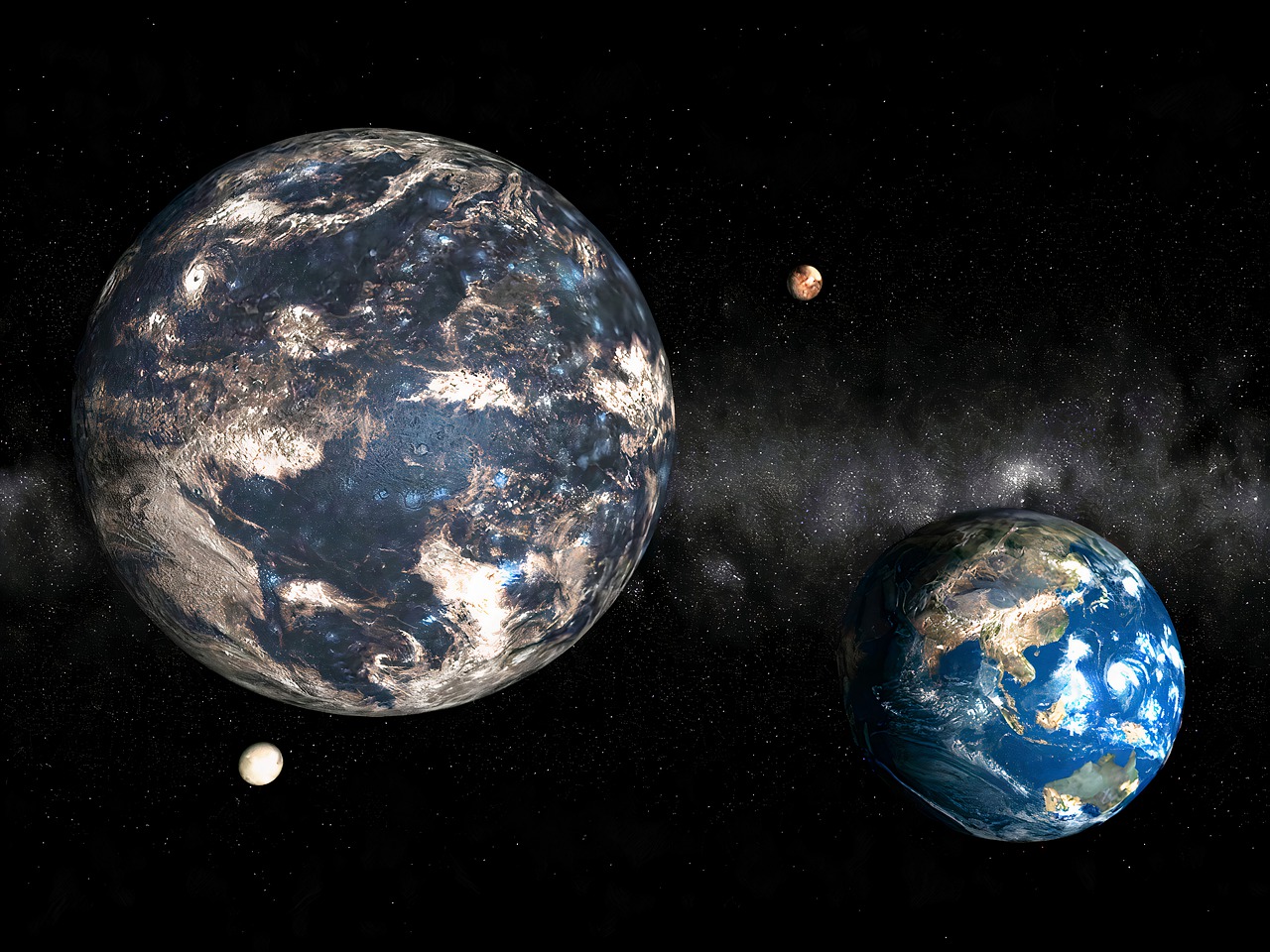Planets too close to their star are too hot (such as Venus), those too far, are too cold (like Mars), whereas planets in the habitable zone are just right. Whilst there has been much effort in identifying planets in the theoretical habitable zones of their stars, until now there was no way of knowing whether they truly have liquid water.

An artist’s impression of the super-Earth planet Ross 508b. Image credit: Sci.News.
Across our own Solar System, astronomers can detect the presence of liquid oceans by observing glints — flashes of sunlight that reflect off liquid surfaces.

These glints, or specular reflections, have been observed, for instance, on Saturn’s largest moon, Titan, which helped to confirm the moon’s large lakes.
Detecting a similar glimmer in far-off planets, however, is out of reach with current technologies.
Earth is the only planet among the trio that currently hosts liquid water. And the researchers noted another obvious distinction: Earth has significantly less carbon dioxide in its atmosphere.

“We assume that these planets were created in a similar fashion, and if we see one planet with much less carbon now, it must have gone somewhere,” Dr. Triaud said.
This planetary-scale effect has left Earth’s atmosphere significantly depleted of carbon dioxide compared to its planetary neighbors.

“After reviewing extensively the literature of many fields from biology, to chemistry, and even carbon sequestration in the context of climate change, we believe that indeed if we detect carbon depletion, it has a good chance of being a strong sign of liquid water and/or life,” Dr. de Wit said.

In the study, the researchers lay out a strategy for detecting habitable planets by searching for a signature of depleted carbon dioxide.
Such a search would work best for ‘peas-in-a-pod’ systems, in which multiple terrestrial planets, all about the same size, orbit relatively close to each other, similar to our own Solar System.

Once astronomers determine that multiple planets in a system host atmospheres, they can move on to measure their carbon dioxide content, to see whether one planet has significantly less than the others.

If a planet’s atmosphere shows signs of both ozone and depleted carbon dioxide, it likely is a habitable, and inhabited world.